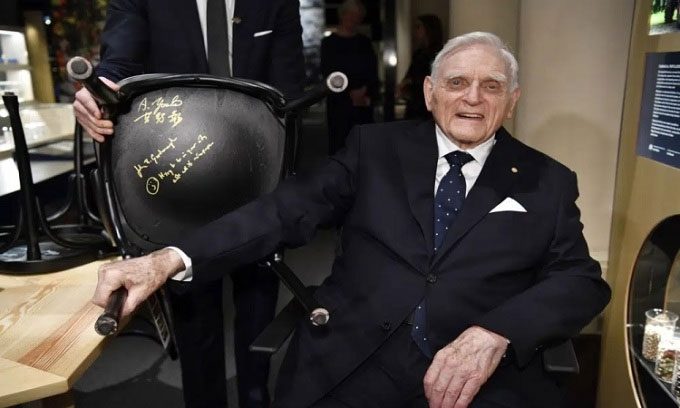John Goodenough, the scholar who won the Nobel Prize in Chemistry in 2019 for co-developing lithium-ion batteries that revolutionized charging technology, passed away on June 25 in Austin, Texas.
The University of Texas announced on June 26 that Professor Goodenough had died, but did not disclose the cause of his passing. Professor Goodenough had worked at the University of Texas for nearly 40 years, according to AP. He was the oldest recipient of the Nobel Prize. He shared the award with American scientist M. Stanley Whittingham and Japanese researcher Akira Yoshino. Goodenough once expressed his gratitude for not being forced to retire at the age of 65.

Professor John Goodenough worked at the University of Texas for nearly 40 years. (Photo: AP).
Goodenough’s research ushered in a revolution in the technology behind mobile phone, tablet, and any device with a charging port. The lithium-ion battery, the world’s first portable and rechargeable battery, took over a decade to develop. In 2019, Whittingham remarked that he never expected his research from decades ago would have such a profound impact on the world. “We thought it was a good and useful invention for a few things, but we never dreamed it would revolutionize the electronics industry and everything else,” Goodenough stated.
Goodenough, Whittingham, and Yoshino each made breakthroughs that laid the groundwork for the development of commercial rechargeable batteries, which led them to jointly share the Nobel Prize worth $900,000. Whittingham’s work in the 1970s harnessed the properties of lithium, the lightest metal, to create a battery that could produce more than 2 volts of electricity. In 1980, building on Whittingham’s research, Goodenough doubled the battery capacity to 4 volts by using cobalt oxide in the cathode, one of the two electrodes of the battery.
That type of battery was still too volatile for commercial use. Yoshino’s work in the 1980s eliminated the flammable pure lithium in batteries and replaced it with safer lithium ions. The first lightweight, safe, durable, and rechargeable commercial battery entered the market in 1991.
Born in Jena, Germany in 1922, Goodenough grew up in the United States and earned a Ph.D. in chemistry from the University of Chicago. He began his career at the Massachusetts Institute of Technology. There, his research laid the foundation for the development of random access memory in digital computers. Goodenough was the director of the Inorganic Chemistry Laboratory at the University of Oxford in England when he invented the lithium-ion battery. He moved to the University of Texas in 1986, where he continued to teach and research battery materials, solid-state science, and engineering issues until he received the Nobel Prize. Goodenough was married to his wife Irene for 70 years until her passing in 2016.


















































